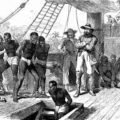An air mass is a large body of air that has roughly the same temperature and humidity characteristics at any given altitude. Air masses form over specific regions, known as source regions, where they acquire the temperature and moisture characteristics of the surface beneath them. There are four main types of air masses:
- Maritime Tropical (mT) – These air masses form over tropical oceans and are characterized by high humidity and warmth.
- Maritime Polar (mP) – These air masses form over cold ocean waters and are characterized by cool temperatures and high humidity.
- Continental Tropical (cT) – These air masses form over land in tropical regions and are characterized by high temperatures and low humidity.
- Continental Polar (cP) – These air masses form over land in polar regions and are characterized by cool temperatures and low humidity.
Modification of air masses can occur when they move over different types of surfaces, such as water or land. This can cause the air mass to change its temperature and moisture characteristics, a process known as “air mass modification.” For example, if a maritime tropical air mass moves over a cold ocean, it will become cooler and more humid, while if it moves over a warm landmass, it will become warmer and less humid.
The effects of air masses can be felt in the form of weather patterns. For example, a maritime tropical air mass moving over a warm landmass can bring heavy rainfall and thunderstorms, while a continental polar air mass moving over a warm landmass can bring cold temperatures and clear skies. The movement and interaction of different air masses are a key factor in determining weather patterns in a given area.





Latest Comments